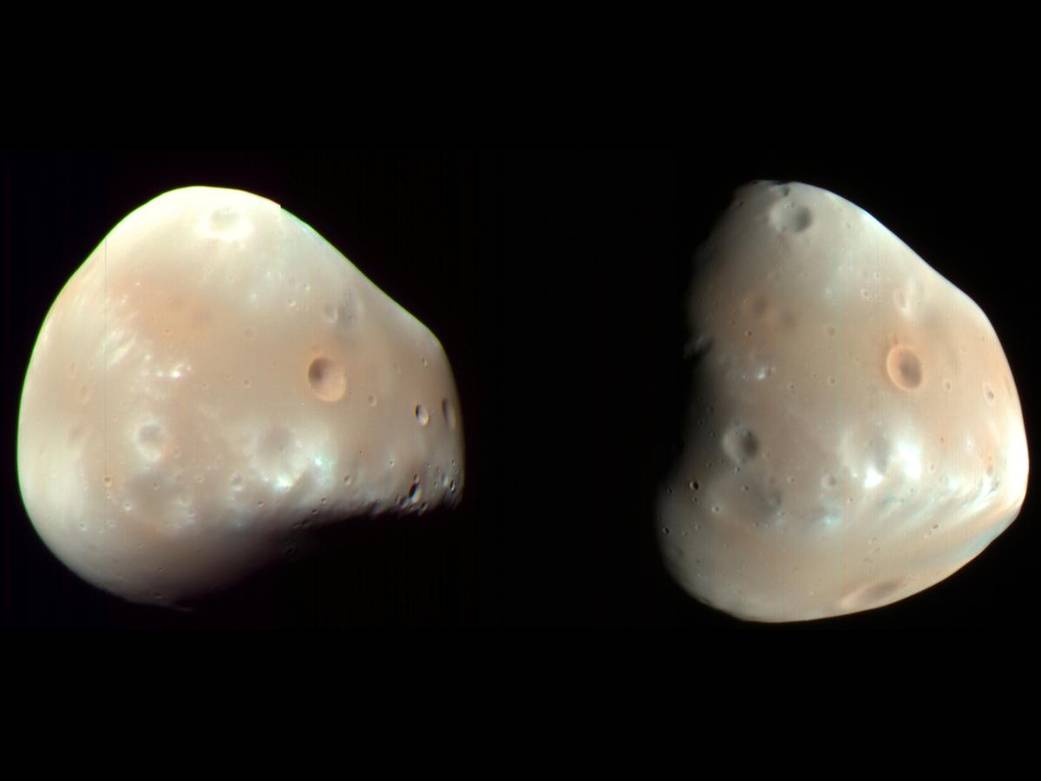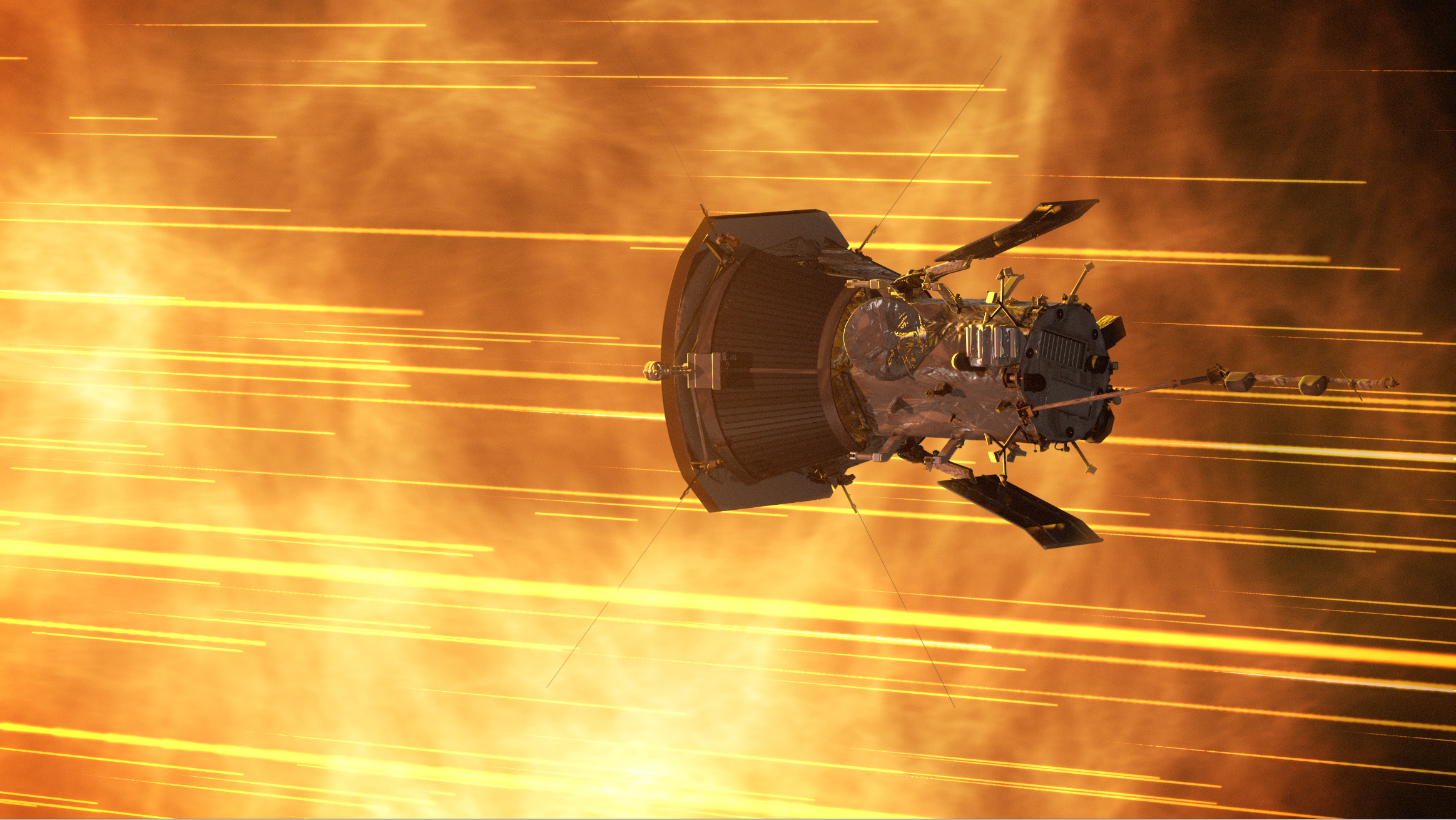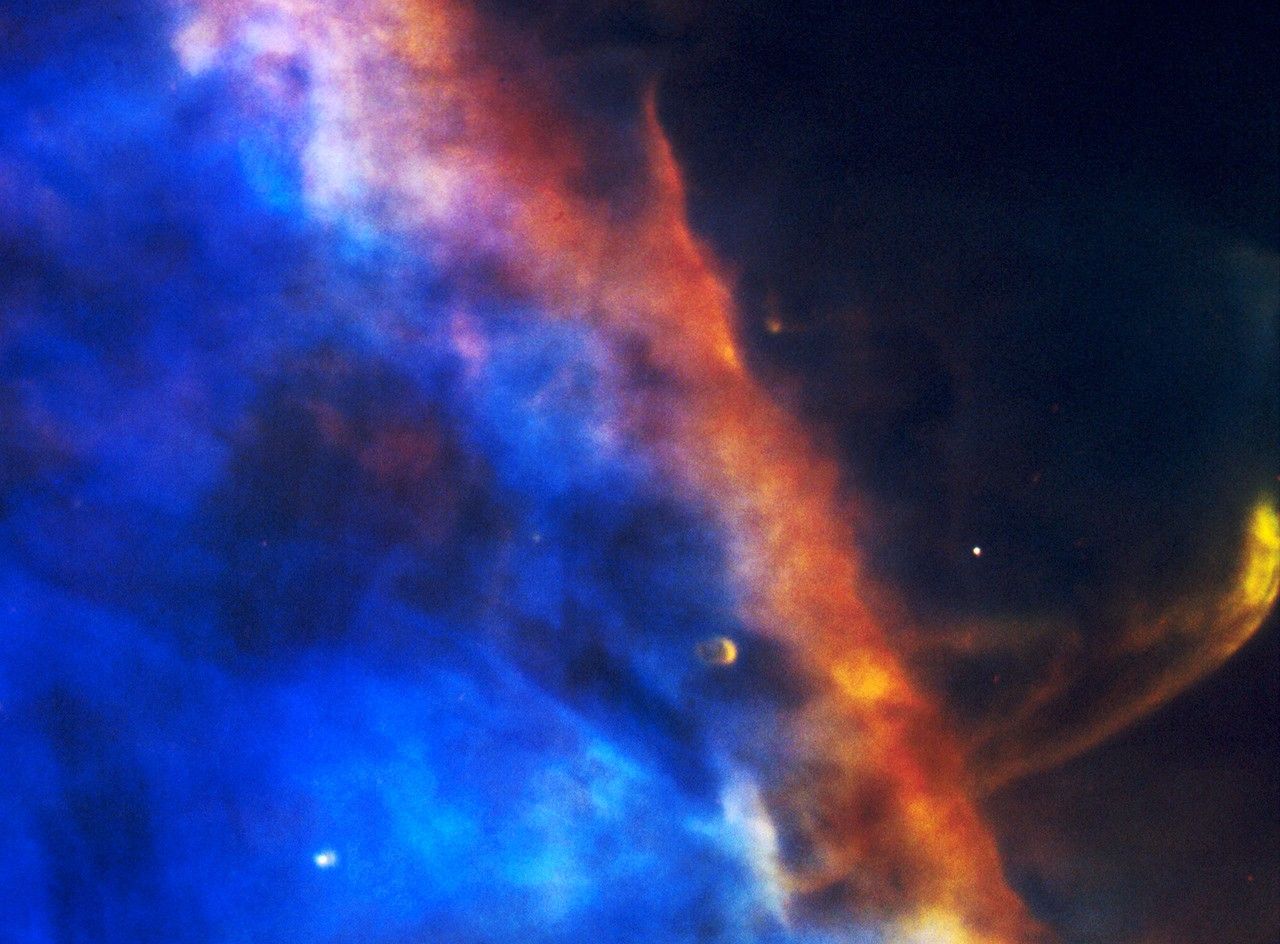
These color-enhanced views of Deimos, the smaller of the two moons of Mars, were taken on Feb. 21, 2009, by the High Resolution Imaging Science Experiment (HiRISE) camera on NASA’s Mars Reconnaissance Orbiter. Deimos is about 7.5 miles in diameter.
Deimos has a smooth surface due to a blanket of fragmental rock or regolith, except for the most recent impact craters. It is a dark, reddish object, very similar to Mars’ other moon, Phobos.
These Deimos images combine HiRISE exposures in near-infrared, red and blue-green wavelengths. In the enhanced color, subtle color variations are visible – redder in the smoothest areas and less red near the fresh impact craters and over ridges of topographic highs. The color variations are probably caused by exposure of surface material to the space environment, which leads to darkening and reddening. Brighter and less-red surface materials have seen less exposure to space due to recent impacts or downslope movement of regolith.Image Credit: NASA/JPL-Caltech/University of Arizona




























